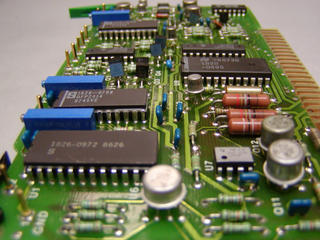Rework

The techs on our production line keep log books of every instrument they repair. Information they record includes what the failure was, and what they did to fix it. After months of building up these records it sometimes becomes invaluable to them. For example, if a new technician comes on the line for training they can use the repair log book as a way to go over some of the most common problems. Other times a problem may not be seen for a long period of time and the guys might forget what the fix was. In the book they can look it up and find the repair. Saves them all some time and extra headaches. I thought it would be a good idea if I did the same thing in the assembly area. I started my own Repair/Rework notebook. During the past two months it's already turned out to be useful. I expect six months or a year out from now I should see some interesting trends on the most common assembly related problems. Or if the techs have an issue they can't figure out maybe some of this material will speed up the troubleshooting time. So far for November and December I did some pretty hectic repairs and reworks as some of these brand new units are turning out to be total dogs...
11/12 Replaced power mod motherboard in instrument 2450.
11/13 Replaced power mod motherboard and plug wiring harness. Replaced transformer in power supply. Cleaned up and resoldered +5v wires to all board mod motherboards. 2450.
11/13 Replaced 2 boards in phase mod due to missing component and short to ground. 1137.
11/14 Replaced motherboard in 2449.
11/14 Removed entire power supply assembly from 2450.
11/14 Removed card cage and replaced motherboard in 2452. Broken connector on A4A3 J6. Replaced the 361 board in 2452.
11/15 Replaced entire power supply in 2450. Power supply still fails test. This shit is starting to piss me off. Removed and replaced 310 motherboard (green mod) 2450.
11/15 Replaced 4Ghz oscillator on 361 board. J6 connector snapped off while torquing down. FUCK.
12/17 Replaced defective reverse power protector from a retrofitted instrument (serial number 65).
12/23 Gray wire from main wiring harness was trapped behind attenuator and shredded. Desoldered the whole god damned wiring harness and removed from front panel and motherboards. New wiring harness soldered in. 2460.
12/30 3 keys on reference casting were glued onto the A8A4 board in reverse order- and upsidedown (fucking dayshift nitwits). Replaced A8A4 board and glued on new keys. 2475.
12/30 Reverse power protector replaced on card cage. Re-installed attenuator. 4539.




0 Comments:
Post a Comment
<< Home